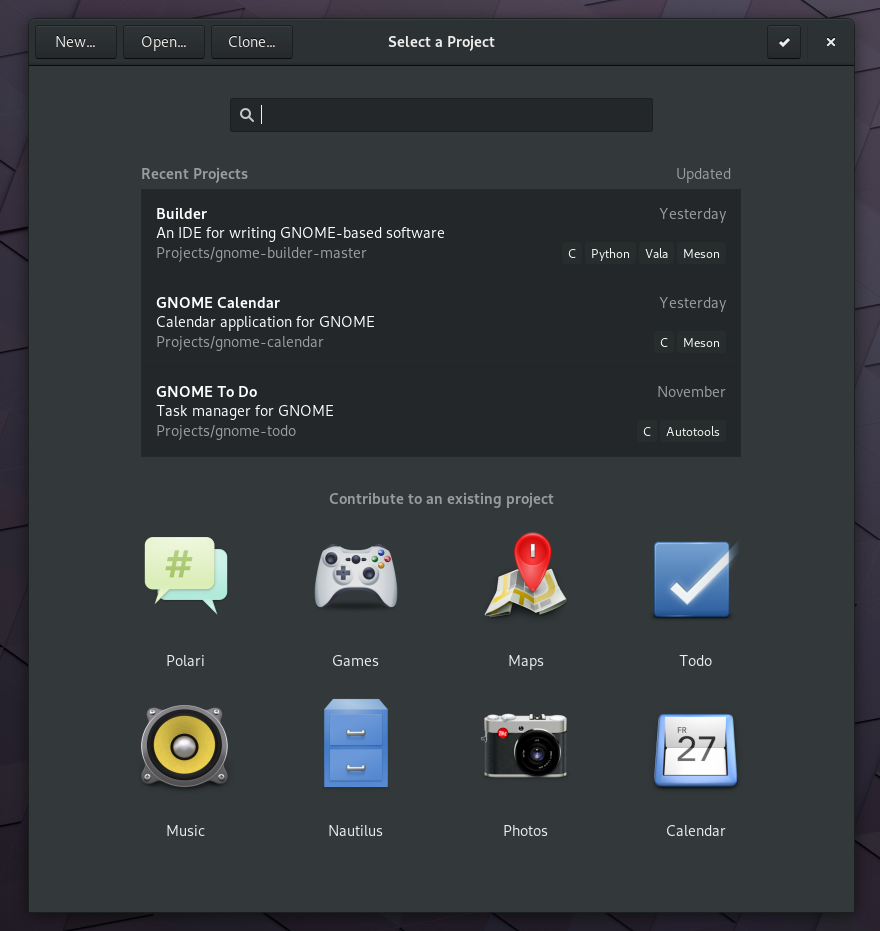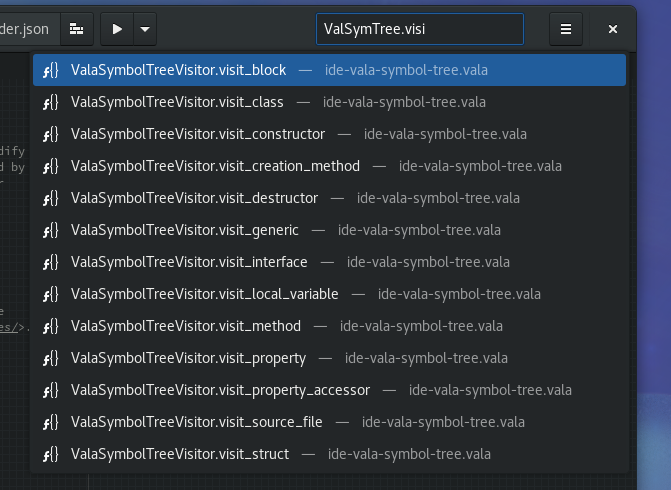We are a couple of months into Builder’s 3.28 development. We have fewer big ticket features scheduled this cycle when compared to 3.26. However that is replaced by a multitude of smaller features and details. Let’s take a look at some of what has been done already.
Flatpak Improvements
Early in the cycle we merged a feature upstream in flatpak-builder to emit escape sequences to set the terminal title as we progress through the build pipeline. Users of jhbuild are probably familiar with this type of thing as it does something similar. We can now consume this information from Builder to show more detailed progress about your Flatpak as it builds.
With yesterdays Flatpak 0.10.1 release, we got a feature we needed to access /usr/include of the host from a Flatpak. This means Builder can more easily develop against your host platform when using Builder from flatpak. It’s not a common request, but one we can support now.
Also yesterday, was the release of flatpak-builder 0.10.5. It has a new feature allowing us to specify --state-dir. If we detect a new enough flatpak-builder, we’ll use this to share dependency checkouts among various projects. When combined with shallow clones, I expect this to help reduce downloads for people who contribute to multiple projects.
Pseudo-Terminal Integration
We now depend on libvte directly from libide. This allows us to use a pseudo-terminal (PTY) in the build pipeline and show a terminal for the build output. This is both faster than our previous GtkTextView implementation and also adds support for colors and fixed scroll-back. If you have something other than a subprocess generating a build logs, we merge those into the terminal too!
Simplified Newcomers
As seen previously, we have a simpler process for newcomers wanting to explore an existing GNOME project. Just click on the icon and hit run!
Improved To-Do
By increasing our guarantees of thread-safety, we were able to speed up our scanning for todo items. We also fixed a few bugs along the way.
Improved Editor Search
Our editor search is some of the trickiest code in Builder. This is because we have to try to emulate various systems such as Vim. We refactored quite a bit of it to make it more resilient and handle all those tricky corner cases better.
More Code Indexers
Patrick contributed a GJS code indexer which can make it easier to jump around to classes and functions in your GJS-based project. I did the same for Vala. If you’re part of either of these language communities, we could really use your help improving our support for them.
Three-Finger-Swipe
As seen previously, the editor gained three-finger-swipe support to move editor panels left or right. You need Wayland for this feature for proper three-finger-swipe support for the lower layers of the stack.
Improved Meson and CMake Integration
Both the Meson and CMake build system plugins have been ported to C to get some type safety on our side. The architecture was also changed a bit to make it easier to extract compiler flags without needlessly advancing the build pipeline.
Unit Testing
The basics of unit testing have landed. We still have lots to do here before 3.28 like running under gdb and getting failure logs.
Find-Other-File Improvements
The find-other-file plugin was improved to support using the global search to list alternate files. This can be handy when switching between source, headers, and ui files.
Compile Commands Database
Builder now has a helper for compile_commands.json style files made popular by Clang. This can simplify the implementation of CFLAGS extraction by build systems that support it.
Build Target Providers
Creating and IDE that natively supports such a wide variety of project types and packaging technologies can be quite a challenge. There is often no clear abstraction for where a piece of information should be extracted. For example, does the build system know about installed build targets and how to run them? Is it the packaging technology, or a .desktop file? How about when containers are used?
This harsh reality means that sometimes we need to be very specific about our extension points. The new build target provider allows various system components to give us information about build artifacts. This has made it easier to run applications even when the build system has limited support. Long story short, if you use flatpak, things should mostly Just Work™, even when you use less well supported build systems like CMake.
Happy hacking!





